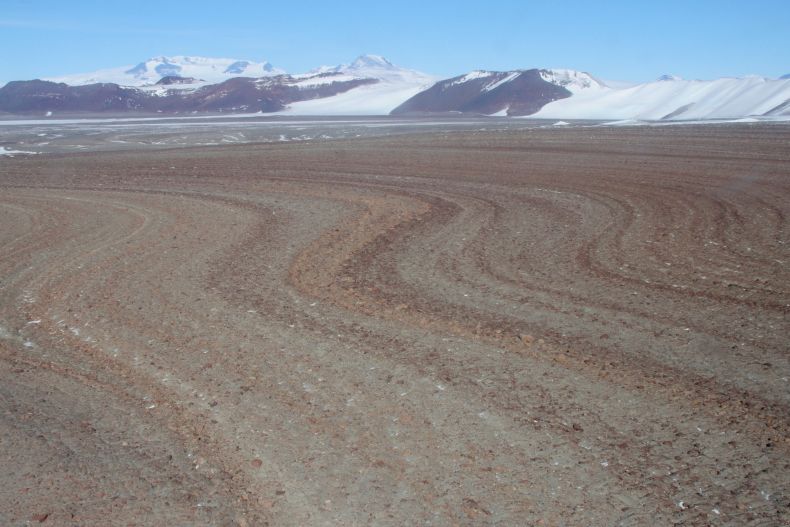The author(s) will give a talk
The multidisciplinary story of Antarctica's history as told from blue ice moraines
1 Indiana University Purdue University Indianapolis
2 Lamont Doherty Earth Observatory
3 Indiana University Purdue University Indianapolis
4 Northumbria University
5 Indiana University Purdue University Indianapolis
Till in an extensive blue ice moraine in the central Transantarctic Mountains shows relatively continuous deposition by East Antarctic derived ice throughout the last several glacial cycles. Our datasets show that Antarctic blue ice moraines may be repositories of sediment from the warm-based portions of ice on the polar plateau and provide valuable archives of ice sheet and geologic history around the continent. The well-preserved Mt. Achernar moraine consists of quasi-continuous, hummocky sediment ridges that form on top of sublimating ice. Ground-penetrating radar (GPR) imaging of the internal structure beneath the moraine’s debris cover shows that the moraine formed through the lateral accretion of basal debris-rich ice layers thrust upward over time. Pebble lithology and detrital zircon geochronology reveal distinct spatial changes between dominant sedimentary (Beacon) and igneous (Ferrar) composition at both meter and kilometer scales. The provenance changes observed in the pebble fraction are interpreted to indicate relative stability of the East Antarctic ice sheet, as the Law Glacier tapped into and eroded successively lower stratigraphic units of the Beacon Supergroup.
*Graly, J., Licht, K., *Bader, N., and Bish, D.L., 2020. Chemical weathering signatures from Mt. Achernar Moraine, Central Transantarctic Mountains I: Subglacial sediments compared with underlying rock. https://doi.org/10.1016/j.gca.2020.06.005
*Kassab, C., Licht, K., Petersson, R., Lindbäck, K., Graly, J., and Kaplan, M., 2019. Formation and Evolution of an extensive blue ice moraine in central Transantarctic Mountains, Antarctica. https://doi.org/10.1017/jog.2019.83
*Graly, J.A., Licht, K.J., *Kassab, C.M., Bird, B.W., and Kaplan, M.R., 2018. Sediment entrainment mechanisms and ice origin in an Antarctic blue ice moraine assessed through stable isotope analysis and internal structures of shallow ice cores. doi: 10.1017/jog.2018.4
*Graly, J.A, Licht, K.J., Druschel, G.K., and Kaplan, M.R., 2018. Polar desert chronologies through quantitative measurements of salt accumulation. Geology 26, 351-354.
*Bader, N.A., Licht, K.J., Kaplan, M.R., *Kassab, C., and Winckler, G., 2017. East Antarctic ice sheet stability since the mid-Pleistocene recorded in a high-elevation ice-cored moraine. Quaternary Science Reviews 159, p.88-102.
Kaplan, M.R., Licht, K., Winckler, G., Schaefer, J.M., *Bader, N., Mathieson, C., Roberts, M., *Kassab, C.M., Schwartz, R., and *Graly, J.G., 2017. Late Pleistocene stability of the East Antarctic ice sheet, as seen from the Transantarctic Mountains. doi:10.1130/G39189.1
*the geologic 'Grandmentees' of John Andrews

Fig 1.
Photograph of the Mt. Achernar moraine highlighting continuity of compositional changes.